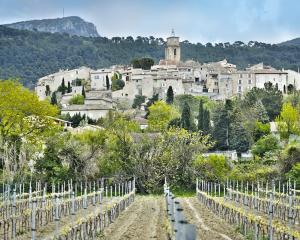

Equally, though, it’s tempting to stay indoors near the fire and the stove, to prepare something warm and wholesome that will stop my toes and nose from turning blue.
Although it seems like precious little is happening in the garden right now, that’s nowhere near true. Cavolo nero is a hero in my garden right now, poking out through the snow and delivering so much nutritional goodness.
Red cabbage is another winter star and it also delivers health benefits in bountiful amounts. This year I’m regretting not taking my own advice and staggering planting out my seedlings. I have a sea of red cabbages all coming on at once. Never mind, we love the warming taste of slow-cooked red cabbage.
Our heritage apple trees have delivered an abundant harvest this year and though I stopped weighing the harvest after the first few days of picking, I feel like we have had 150kg so far.
They are not good eating apples so it is into apple sauce or being juiced daily or fermented into apple cider vinegar.
Best of all, they are delicious in desserts and my nan’s steamed pudding with apples and golden syrup is perfect for a chilly evening treat.
I hope these recipes inspire you to lean into the comforts of winter for slow-cooked dishes that feed body and soul.
Nga mihi nui.

Red cabbage
Cabbage is relatively easy to grow (just watch out for those creepy-crawlies) and equally easy to add to your diet, whether it’s as the main event - a hearty soup, for instance - or a tangy and nutritious side.
Winter staple
Cabbage is a great winter staple, a cool-season crop that grows well in autumn, winter and spring. Once temperatures start to rise above 21degC, plants begin to suffer. They stop growing altogether at about 25degC, and heads may crack or bolt. Conversely, in areas with freezing winters and extended frosts (below -7degC), European cabbage varieties tend to bolt without forming heads. In these conditions, growing in tunnel houses is ideal. Red cabbages contain healthy levels of anthocyanins, antioxidants that give purple and red-coloured fruit and vegetables their hue.
Where to grow
All cabbages like rich soil with plenty of compost, aged manure or dug-in worm castings. Surprisingly, they are relatively resistant to drought (though less water means smaller plants and smaller heads). This drought tolerance comes from their ancestor — the wild cabbage, which grows in an arid environment.
Planting
Plant seedlings deep — to where the first leaf grows from the stem — and firm soil with your heels or the back of a rake. When grown in loose soil, plants tend to grow tall and leggy with loose heads. Keep plants moist to ensure good size and taste. Lack of water, followed by a sudden influx, can cause the heads to split.
Watch out for
When the weather warms up, keep alert for slugs and snails and white cabbage butterflies. Pick them off (or squish them) when numbers are low to keep them under control.
Harvesting
Cabbages are biennials, producing their leafy heads in the first year and flowering and setting seed in the second. Unless you wish to collect the seeds, harvest in the first year as soon as the heads are big enough — don’t leave it too late, or the heads will split open.

Golden syrup apple steamed pudding
My nan used to make steamed pudding with apple and golden syrup all the time. Unfortunately, I never got her recipe before she passed away, so I’ve had to come up with my own based on my memories of hers.
You don’t need a fancy pudding bowl to steam a pudding; any plain old stainless steel bowl will do - cover it tightly with baking paper and tinfoil and secure with string.
And keep an eye out to make sure the pot doesn’t boil dry. You can also bake this pudding in the oven in a large dish, which cooks it faster.
We placed it in a hangi (in the middle of the vegetables) to cook, and it was delicious.
SERVES 10-12
Prep time 15 minutes
Cook time 2 hours 30 minutes to steam or 1 hour to bake
½-¾ cup golden syrup
150g butter, softened
175g sugar
4 large eggs
finely grated zest of 1 lemon
3 Tbsp lemon juice
1/3 cup milk
200g plain flour
2 tsp baking powder
2-3 apples, peeled and diced
Method

This is a delicious way to cook cabbage, especially good served alongside roast, pan-seared or slow-cooked venison or lamb with mashed or roasted kumara or potatoes.
SERVES 4
Prep time 5 minutes
Cook time 30 minutes
2 Tbsp olive oil
1 Tbsp butter
800g (½ large) red cabbage, finely sliced
2 cinnamon sticks
1 bay leaf
1 cup red wine
juice of 1 orange
2 Tbsp dried currants
1 Tbsp plum, cherry or blackberry jam or jelly
knob of butter
Method
Place olive oil, butter, cabbage, cinnamon sticks and bay leaf into a large heavy-based saucepan over medium-high heat.
Cook, stirring often, for about 10 minutes, until the cabbage is starting to soften.
Add wine, orange juice, currants and jam/jelly.
Continue cooking for a further 20 minutes or so until the cabbage is soft and the liquid has reduced.
Remove cinnamon stick, stir through the knob of butter and season to taste with salt and pepper.













